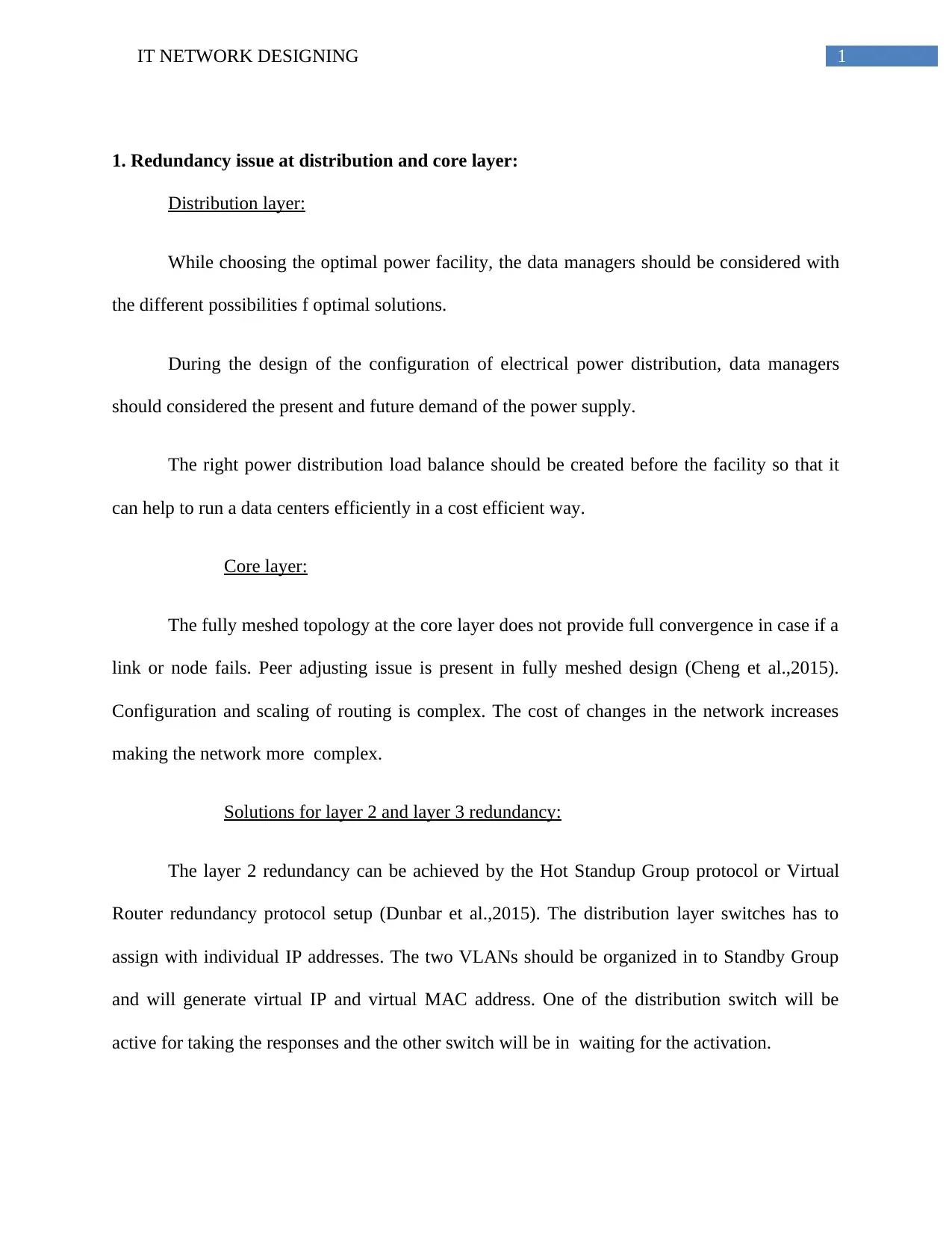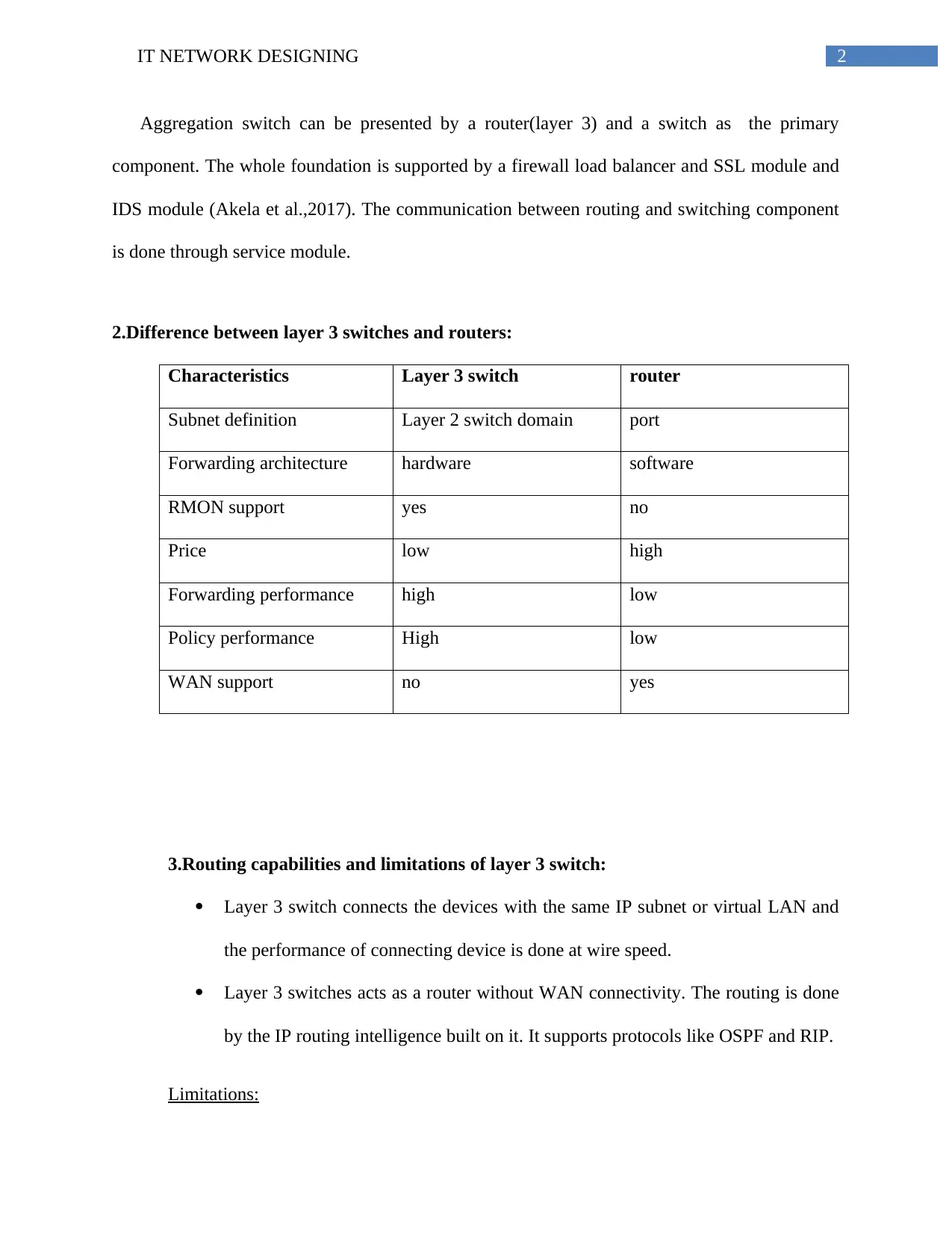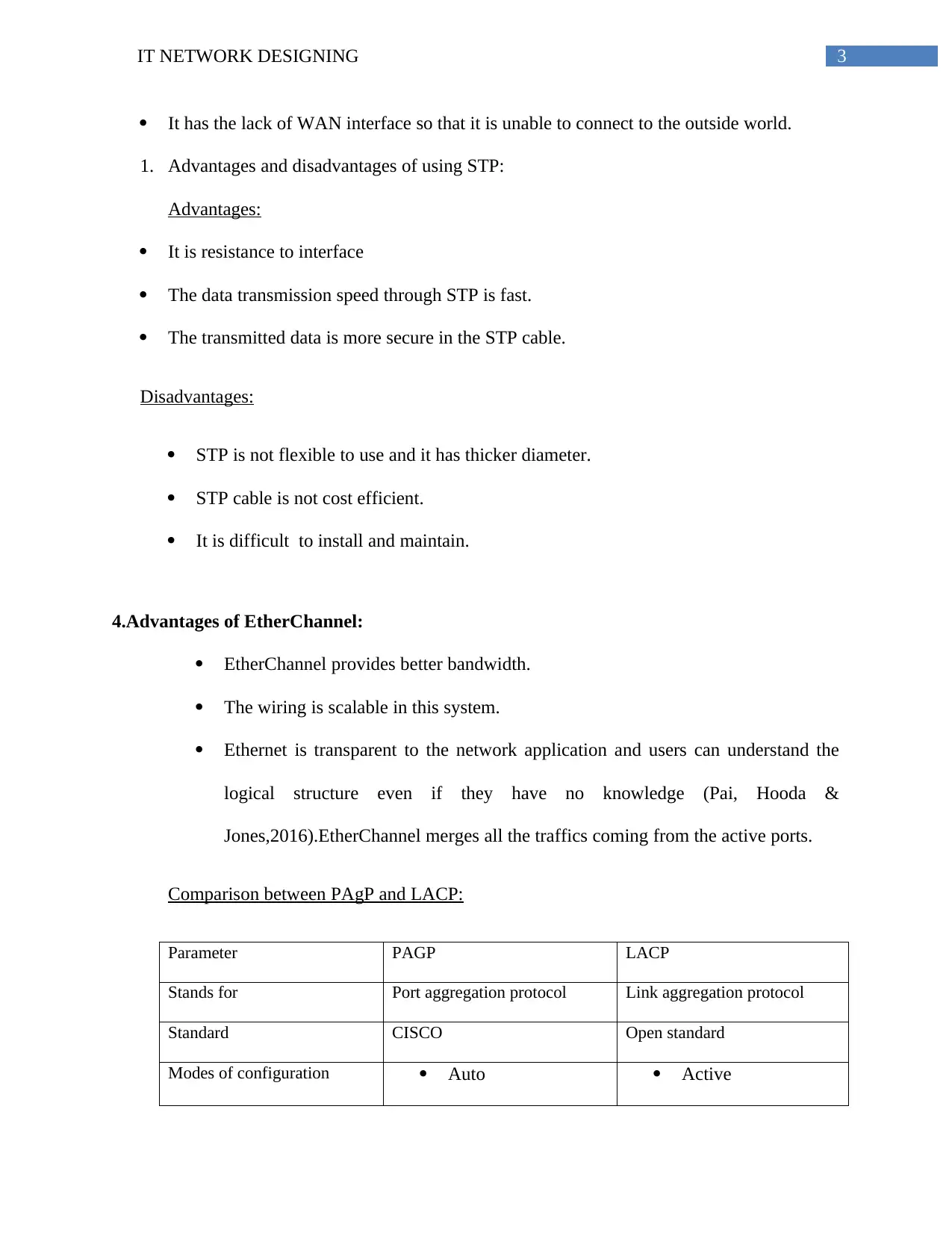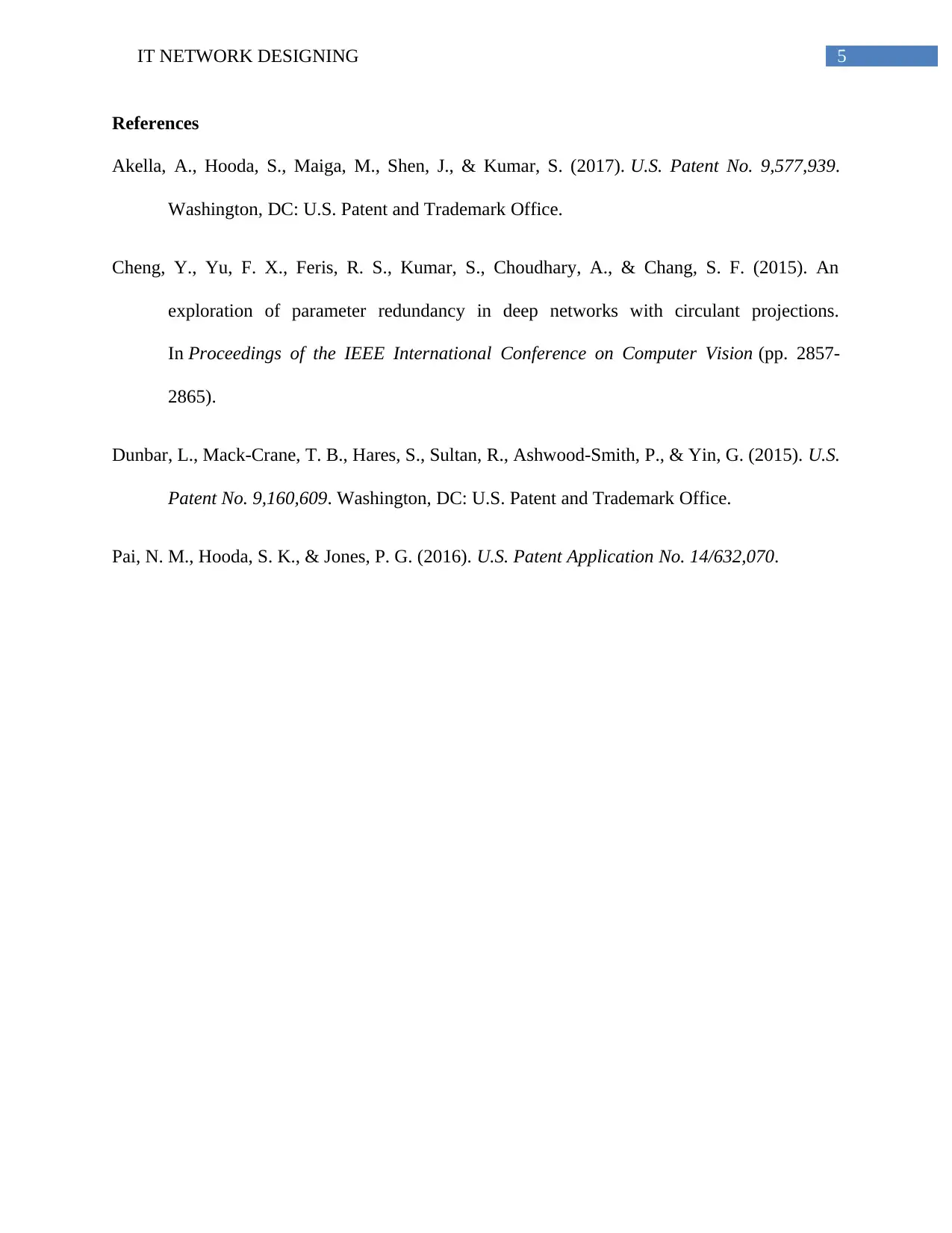IT Network Design: Redundancy, Layer 3, STP, EtherChannel
VerifiedAdded on 2021/06/14
|6
|780
|27
Report
AI Summary
This report provides an analysis of IT network design, focusing on key aspects such as redundancy at the distribution and core layers, the differences between Layer 3 switches and routers, routing capabilities and limitations of Layer 3 switches, advantages and disadvantages of using STP, and the advantages of EtherChannel. The report also includes a comparison between PAgP and LACP protocols. The student explores redundancy issues and solutions, including Layer 2 and Layer 3 redundancy, and evaluates the performance and capabilities of different network components. The report draws on relevant academic sources to support its findings and provides a comprehensive overview of the topics discussed. This assignment provides a deep dive into the technical aspects of network design, offering insights into various protocols and technologies used in modern network infrastructure. The report also includes references to academic resources to support the analysis.
1 out of 6












![[object Object]](/_next/static/media/star-bottom.7253800d.svg)